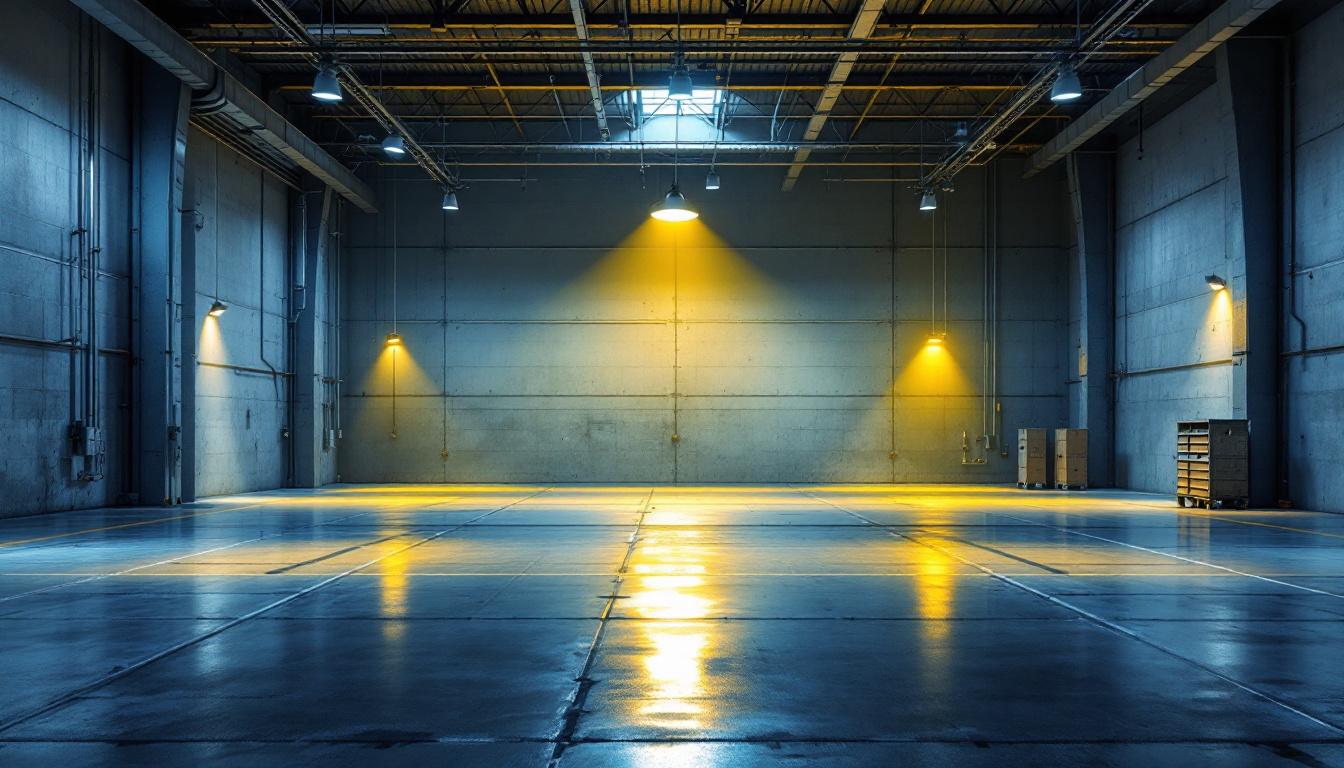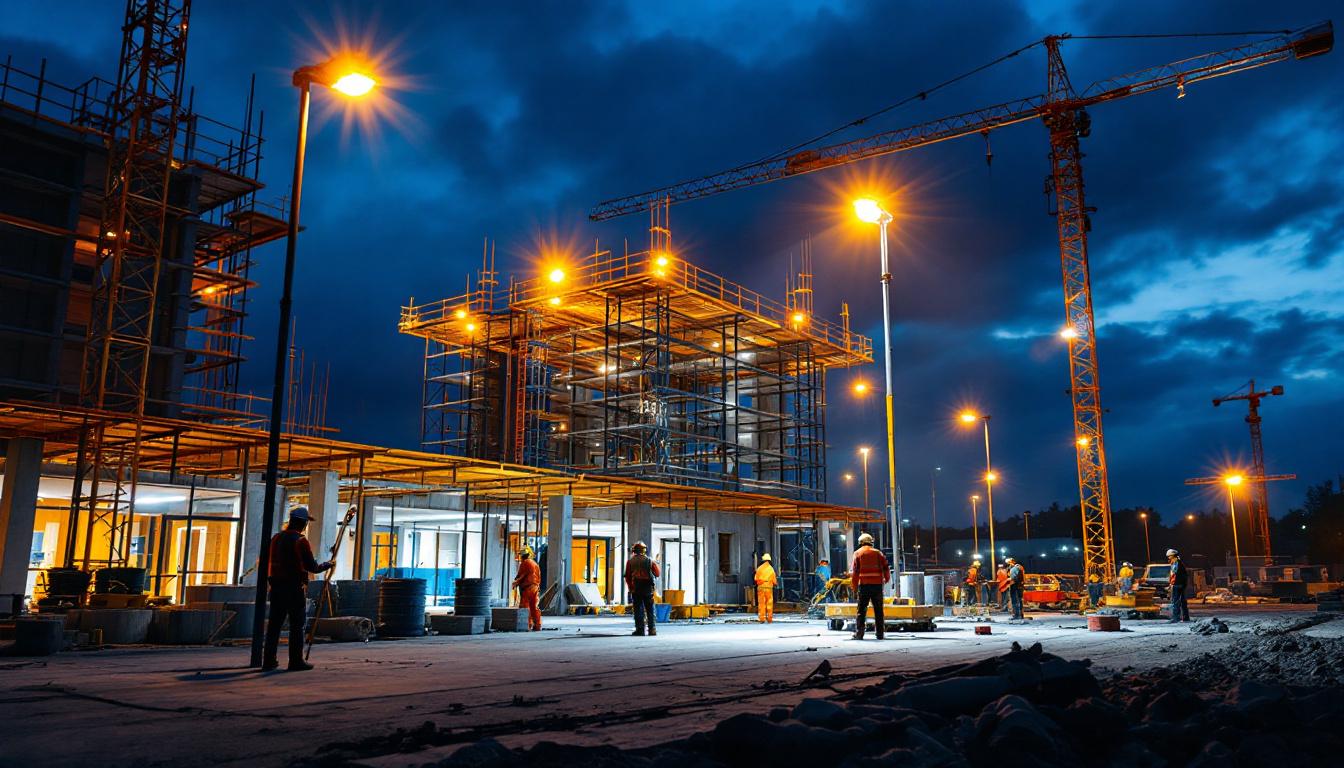
In the realm of industrial outdoor lighting, contractors play a pivotal role in ensuring that spaces are not only well-lit but also safe and efficient. However, despite their expertise, many contractors make common mistakes that can lead to subpar installations, increased costs, and even safety hazards. Understanding these pitfalls is essential for delivering quality work and maintaining a strong reputation in the industry.
Before delving into the common mistakes, it is crucial to recognize why proper outdoor lighting is essential in industrial settings. Adequate lighting enhances safety, increases productivity, and can even deter crime. Moreover, it contributes to the overall aesthetic of the facility, making it more inviting for employees and visitors alike. Well-designed lighting can create a sense of security and comfort, encouraging a positive work environment that fosters collaboration and innovation among team members.
Additionally, the right lighting can significantly influence the mood and performance of employees. Studies have shown that well-lit spaces can improve focus and reduce fatigue, leading to higher efficiency levels. In contrast, dim or harsh lighting can lead to eye strain and decreased morale, ultimately affecting the quality of work produced. Therefore, investing in proper lighting is not merely a functional decision but also a strategic one that can enhance overall workplace satisfaction.
Safety is paramount in any industrial environment. Poor lighting can lead to accidents, injuries, and even fatalities. Areas that are inadequately lit can obscure hazards, making it difficult for workers to navigate safely. Ensuring that all areas are properly illuminated is not just a regulatory requirement; it’s a moral obligation. This includes not only workspaces but also walkways, parking lots, and emergency exits, which should all be well-lit to prevent accidents and ensure quick evacuation in case of emergencies.
Furthermore, proper lighting plays a crucial role in surveillance and security. Well-lit areas are less likely to become targets for theft or vandalism, as potential criminals are deterred by the visibility that lighting provides. Incorporating motion sensors and strategically placed lights can enhance security measures, ensuring that all corners of the facility are monitored and protected. This proactive approach to safety can save businesses from significant losses and promote a culture of safety and vigilance among employees.
With rising energy costs and a growing emphasis on sustainability, energy-efficient lighting solutions are more critical than ever. Contractors must consider the long-term implications of their lighting choices, opting for fixtures that provide adequate illumination while minimizing energy consumption. This not only benefits the environment but also reduces operational costs for clients. The transition to LED lighting, for instance, can drastically cut energy usage and maintenance costs due to their longer lifespan compared to traditional bulbs.
Moreover, energy-efficient lighting can contribute to a company’s sustainability goals and enhance its reputation in the marketplace. Many businesses are now seeking to align their operations with eco-friendly practices, and investing in energy-efficient lighting is a straightforward way to demonstrate commitment to environmental stewardship. Additionally, there are often tax incentives and rebates available for companies that implement energy-saving technologies, making it a financially savvy choice as well.
Even seasoned lighting contractors can fall into traps that undermine their projects. Here are some of the most common mistakes made in the field of industrial outdoor lighting.
One of the most significant errors is failing to conduct thorough planning and design before installation. A well-thought-out lighting plan considers factors such as the layout of the area, the specific tasks performed, and the types of machinery used. Without this foresight, contractors may end up with uneven lighting, dark spots, or overly bright areas that can cause glare and discomfort.
Moreover, neglecting to account for future expansions or changes in the facility can lead to additional costs down the line. A flexible design that allows for adjustments can save both time and money.
The selection of lighting fixtures is another area where mistakes commonly occur. Contractors often choose fixtures based on initial cost rather than long-term performance and durability. Industrial outdoor lighting must withstand harsh weather conditions, including rain, snow, and extreme temperatures. Selecting fixtures that are not rated for outdoor use can lead to frequent replacements and increased maintenance costs.
Additionally, the wrong type of light source can impact visibility and safety. For instance, LED lights are often favored for their energy efficiency and longevity, but if not chosen correctly, they can produce undesirable color temperatures that affect visibility.
Every region has specific regulations and standards governing outdoor lighting, particularly in industrial settings. Ignoring these can result in fines, project delays, and even legal issues. Contractors must stay informed about local codes, including those related to light pollution, energy efficiency, and safety requirements.
Moreover, adhering to these regulations not only ensures compliance but also enhances the overall quality of the installation. It demonstrates professionalism and a commitment to best practices.
Technical errors during installation can significantly impact the effectiveness of outdoor lighting systems. Here are some common oversights that contractors should be wary of.
Mounting heights play a crucial role in the effectiveness of outdoor lighting. Fixtures that are installed too high may not provide adequate illumination for ground-level tasks, while those that are too low can create glare and shadows. Contractors must consider the specific needs of the area and the tasks being performed to determine the optimal mounting height.
Additionally, the angle of the fixtures is essential. Proper angling can help minimize glare and ensure that light is directed where it is needed most. Failure to adjust fixtures correctly can lead to inefficient lighting and increased energy costs.
Maintenance is often an afterthought during the installation phase. However, planning for future maintenance can save time and money. Contractors should consider the accessibility of fixtures for cleaning and bulb replacement. Installing fixtures in hard-to-reach areas can lead to increased maintenance costs and downtime.
Moreover, selecting fixtures that require minimal maintenance can enhance the longevity of the lighting system. Choosing durable materials and finishes can reduce the frequency of repairs and replacements, ultimately benefiting the client.
Photometric analysis is a critical step in ensuring that lighting is effective and efficient. This analysis involves measuring the light output of fixtures and how it interacts with the environment. Contractors who skip this step may end up with poorly lit areas or excessive light levels that can cause discomfort.
By conducting a photometric analysis, contractors can make informed decisions about fixture placement, type, and quantity. This proactive approach leads to better lighting outcomes and enhances the safety and functionality of the industrial space.
Effective communication with clients is vital throughout the lighting installation process. Misunderstandings can lead to dissatisfaction and additional costs. Here are some common communication pitfalls.
One of the most critical aspects of client communication is setting clear expectations from the outset. Contractors should discuss the project scope, timelines, and potential challenges with clients. Failing to do so can lead to misunderstandings and frustration on both sides.
Providing clients with a detailed project plan can help manage expectations and keep everyone on the same page. Regular updates throughout the project can also enhance transparency and build trust.
Clients may not be aware of the various lighting options available to them. Contractors should take the time to educate clients about the benefits and drawbacks of different fixtures, light sources, and designs. This knowledge empowers clients to make informed decisions that align with their needs and budget.
Moreover, discussing energy efficiency and long-term savings can help clients appreciate the value of investing in quality lighting solutions. This conversation can lead to a more collaborative relationship and ultimately better project outcomes.
To avoid common mistakes in industrial outdoor lighting, contractors must prioritize planning, communication, and education. By taking a proactive approach, they can enhance the quality of their work and ensure client satisfaction.
The lighting industry is constantly evolving, with new technologies and best practices emerging regularly. Contractors should commit to continuous learning, attending workshops, and staying updated on industry trends. This knowledge can help them make informed decisions and provide clients with the best possible solutions.
Additionally, adapting to changes in regulations and standards is essential for maintaining compliance and ensuring the safety of installations.
Building strong relationships with clients, suppliers, and other contractors can enhance project outcomes. Collaboration fosters a sense of trust and encourages open communication, which is vital for addressing challenges as they arise. Strong relationships can also lead to repeat business and referrals, which are invaluable in the competitive lighting industry.
In conclusion, while the role of lighting contractors is vital in the industrial sector, common mistakes can hinder their effectiveness. By understanding the importance of proper planning, selecting the right fixtures, adhering to regulations, and maintaining clear communication with clients, contractors can significantly improve their project outcomes. Continuous learning and relationship-building further enhance their ability to deliver exceptional lighting solutions that meet the unique needs of each industrial space.
Ultimately, avoiding these common pitfalls not only benefits contractors but also ensures that clients receive the quality and safety they expect from their outdoor lighting installations.
Don’t let common mistakes compromise your industrial outdoor lighting projects. Choose LumenWholesale for spec-grade lighting products that meet the highest industry standards. With our unbeatable wholesale prices and commitment to quality, you can ensure every installation is efficient, safe, and up to code. Take advantage of our hassle-free bulk buying with free shipping and no hidden fees. Elevate your lighting game and deliver exceptional value to your clients. Wholesale Lighting at the Best Value is just a click away. Experience the LumenWholesale difference today!

Discover essential tips and common pitfalls for lighting contractors when installing LED kitchen cupboard lights.

Discover essential tips for selecting and installing low bay lighting to enhance efficiency and avoid costly errors in your projects.

Discover the pivotal role LED construction work lights play in enhancing efficiency and safety for lighting contractors.

Discover the top strategies lighting contractors use to select and install LED wall sconces.